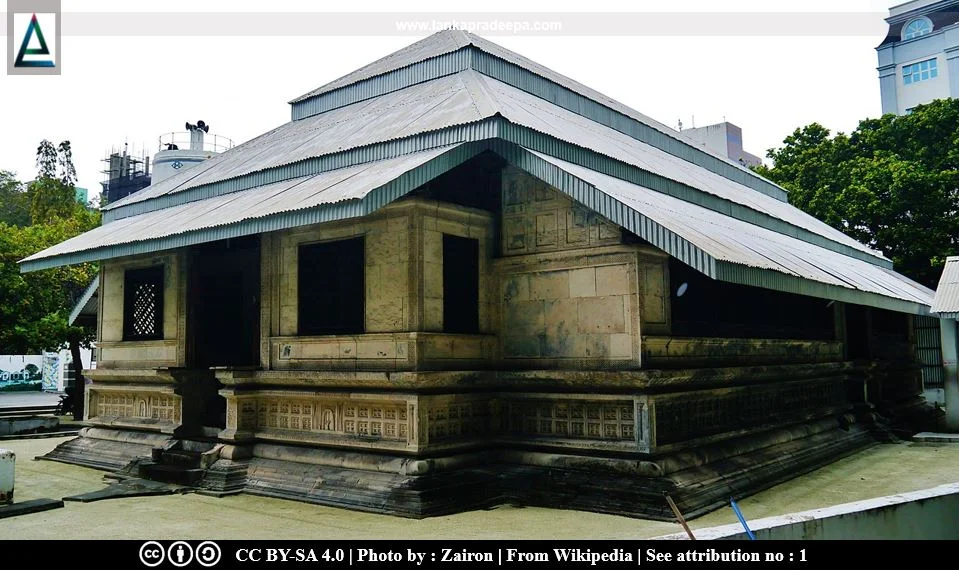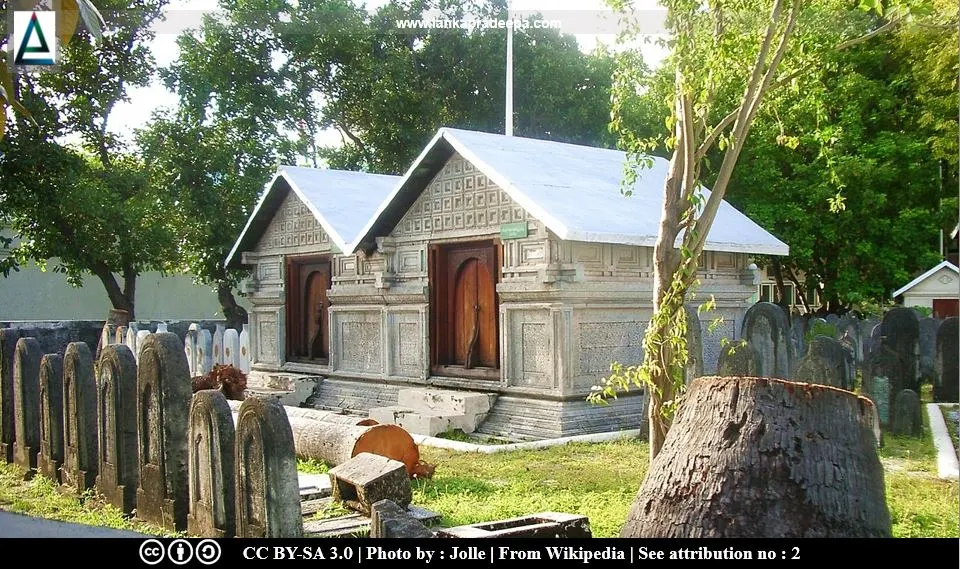
Malé Friday Mosque (also known as Malé Hukuru Miskiy) is an old mosque in the city of Male, Kaafu Atoll, Maldives. It remains in UNESCO's Tentative World Heritage List since 2008.
History
The mosque was built in 1658 during the reign of Sultan Ibrahim Iskandar I (1648-1687 A.D.), replacing an old mosque that was reportedly constructed by Sultan Mohamed Bin Abdullah (the first Muslim Sultan of Maldives) upon his conversion to Islam in 1153 (Fewkes, 2019; Jameel, 2018). Although there is not much information about that original mosque, some details about this mosque can be extracted from the notes of the Moroccan traveller Ibn Batuta in 1343. This mosque is said to have been renovated by Sultan Ahmed Shihabuddeen in 1338.
The construction works of the new mosque over the old were commenced in 1656 and finished in 1658 under the patronage of Ibrahim Iskandar I. After his pilgrimage to Mecca in 1668, Ibrahim Iskandar I ordered to add a minaret (Munnaaru) and a gateway to the mosque. The construction of the minaret was completed in 1674 and was said to closely resemble the minarets of Mecca of that time.
The thatched roofs of the mosque were replaced with corrugated iron sheets in 1904 during the second succession of Sultan Mohammed Shamsuddin III (1903-1934 A.D.). In 1963 the roofs were dismantled and replaced using teak wood and the old corrugated iron sheets were replaced with aluminium.
The mosque complex
Surrounded by a boundary wall, the mosque complex consists of the main mosque building, a large minaret, three coral stone wells, a sundial and a cemetery with mausoleums and tombs of past sultans and dignitaries (Jameel, 2018). The main mosque building has a hypostyle layout extending in an area of about 240 square meters (Jameel, 2018). It is built on a highly decorated coral stone plinth with coral stone walls and timber roof structure. The three tired roof has a highly decorated coffered ceiling with stepped recesses. Many columns and other structures of the building are made from coral stone and have been decorated with fine carvings. Some of these coral works displays features related to Buddhist tradition (Fewkes, 2019).
The cylindrical-shaped minaret of the mosque is made from plastered coral stone and painted in white with decorative calligraphy and metal bands. The cemetery has a number of mausoleums and tombs of past sultans, princes and other dignitaries of the country. The mausoleums have been built using decorated coral stone works with an interlocking coral carpentry system (Jameel, 2018). The tombs which are also made of coral stones are decorated with carvings and Jeli Thuluth calligraphic inscriptions (Jameel, 2018).
 .
.
Attribution
References
1) Fewkes, J.H., 2019. Locating Maldivian Women’s Mosques in Global Discourses. Springer. pp.84-86.
2) Jameel, M.M., 2018. Coral stone architecture of Maldives: a brief overview. Bulletin of Miho Museum. Vol. 18. pp.17-27.
Location Map
This page was last updated on 1 February 2022

